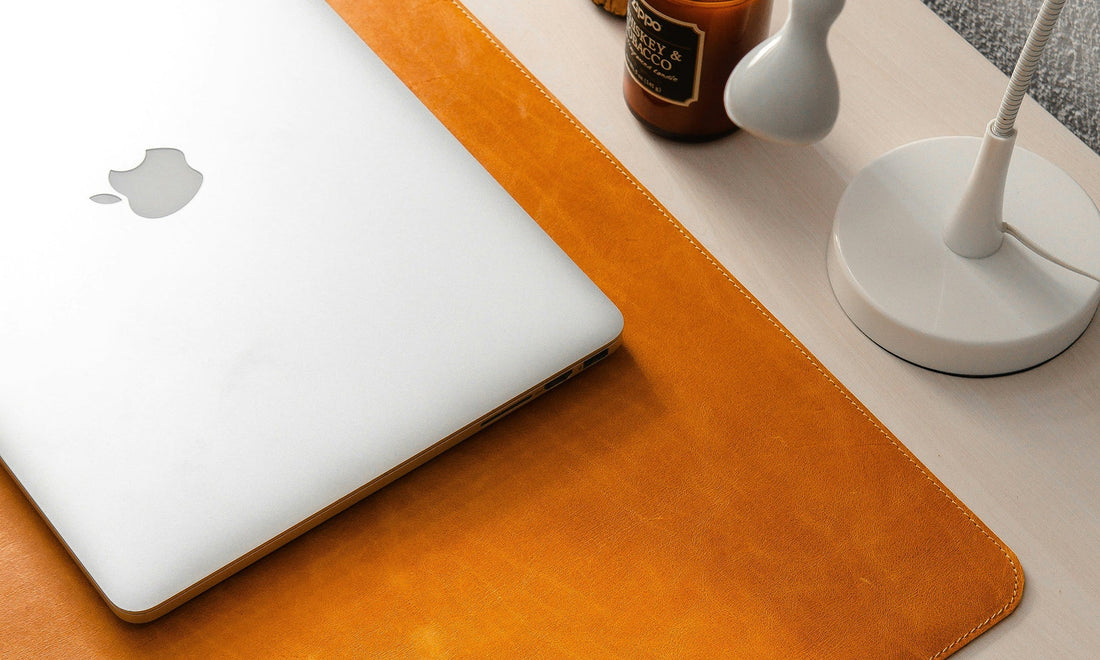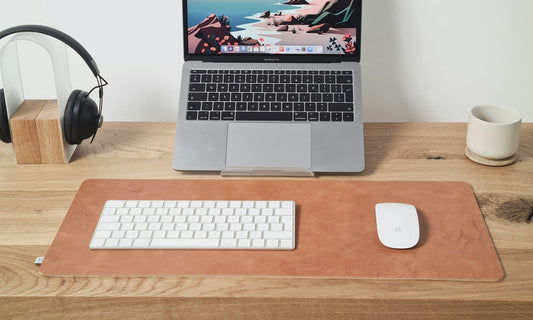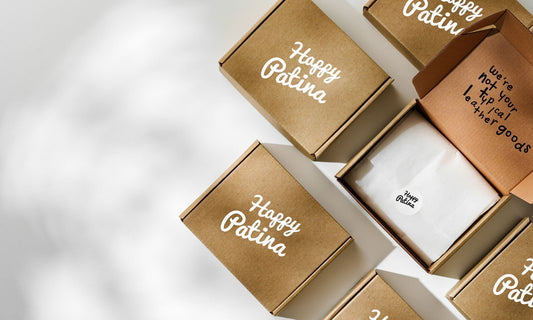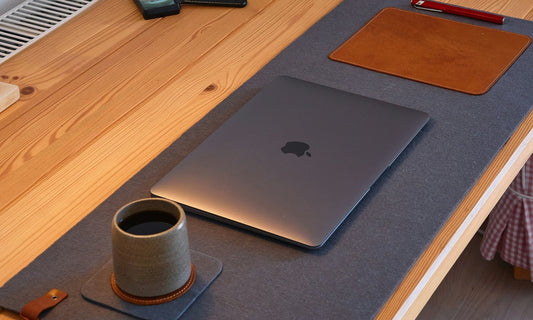
The Beauty of Warm Materials in a Cold Tech World
Oscar ArenasOur world hums with screens. Metal, glass, and pixels dominate our daily lives — sleek, efficient, but cold. In this landscape of precision, the human touch can feel distant. That’s why warm materials — leather, wood, linen — are not just design choices; they’re a quiet rebellion.
At HappyPatina, we believe that warmth and technology can coexist. A workspace should not feel mechanical. It should feel alive — a place where materials breathe, light moves, and the tactile meets the digital.
1. The Rise of the Cold Aesthetic
Modern tech has perfected the language of minimalism — clean lines, metallic tones, mirror finishes. But somewhere along the way, we lost temperature. Our tools became frictionless, and so did our connection to them.
This cold aesthetic serves function but forgets feeling. It prioritizes speed over stillness, precision over presence. And while it looks flawless, it often feels empty — a silent space where warmth once lived.
We designed the future to be efficient. Now we crave for it to be human again.
2. The Return of the Human Hand
Design is entering a new era — one that values tactility over technology. After years of glass and gloss, we’re rediscovering the beauty of surfaces that carry life.
Leather, with its natural irregularities, reminds us of imperfection — and therefore, of humanity. Wood brings organic rhythm, grounding us amid digital overstimulation. Stone and linen add gravity and calm, absorbing light rather than reflecting it.
These materials don’t compete with technology — they complete it. They soften it, contextualize it, make it bearable.
3. Why Warmth Matters in Design
Warmth is not a temperature; it’s an emotion. It’s what makes an object feel lived-in rather than manufactured, personal rather than generic. In a workspace, warmth invites ease — a subtle signal to your senses that this is a place of creation, not consumption.
When your hands rest on a leather desk pad, when your mouse slides across a natural surface, you reconnect with something ancient: the pleasure of touch.
Warm materials remind us that good design is not only meant to be seen — it’s meant to be felt.
Technology accelerates. Warmth slows you down — and that’s where creativity begins.
4. The Dialogue Between Tech and Nature
When digital precision meets organic imperfection, harmony emerges. A leather pad under a MacBook. A wooden tray holding AirPods. A linen cloth beside an aluminum keyboard. Each contrast enhances the other.
This is what we call material dialogue — when textures talk, when light finds softness, when design becomes conversation. It’s not about nostalgia; it’s about balance.
In a world of machine-made perfection, natural materials restore humanity to technology. They remind us that comfort and innovation are not opposites — they’re partners.
5. Leather: The Bridge Between Digital and Tactile
Of all materials, leather holds a unique role. It is ancient yet modern, organic yet architectural. Its scent, texture, and slow transformation through time create a sense of continuity that machines can’t imitate.
At HappyPatina, we use vegetable-tanned leather not just for its beauty, but for its honesty. Each surface is alive with grain and subtle tone, developing patina through years of use — a visual memory of daily interaction.
Placed beneath sleek Apple devices, it creates a visual and emotional balance — grounding technology in warmth, making the mechanical feel personal again.
Leather doesn’t compete with technology. It gives it a soul.
6. Designing for the Senses
In the pursuit of digital efficiency, we often forget the power of sensory design. But touch, scent, and sound shape our focus as much as any app or algorithm.
The soft resistance of leather under your wrist, the muted sound of typing against a padded surface, the absence of glare — these sensory cues tell your brain that it’s safe to slow down, to think deeply, to stay present.
That’s what we call functional serenity — when design supports not only productivity, but peace.
7. The Philosophy of Warm Minimalism
Warm minimalism is not about adding comfort to minimalism — it’s about redefining it. It replaces sterility with stillness, abstraction with texture, perfection with character.
A workspace defined by warm minimalism feels balanced — clean but human, ordered but alive. It celebrates the intersection of technology and touch, inviting both logic and intuition to coexist.
It’s minimalism for the senses — quiet, grounded, and emotionally intelligent.
8. Building a Warm Workspace
Creating warmth in a digital environment doesn’t require excess — just intention. Here’s how to start:
- Anchor with texture: Begin with a leather desk pad or mousepad to introduce natural contrast.
- Layer materials: Combine wood, linen, and metal for balance.
- Soften light: Use diffused lamps instead of cold LEDs.
- Curate color: Keep tones neutral — tan, ivory, stone, brass.
- Edit often: Warmth thrives in clarity, not clutter.
The result is a workspace that feels alive — an environment that welcomes you back each day with quiet gratitude.
9. The Future of Human Design
The future of design isn’t colder, faster, or smarter — it’s warmer. As technology becomes invisible, what remains is experience. The materials that touch our skin, the objects that hold our attention, the light that guides our focus — these are the new luxuries.
In a cold tech world, warmth is not nostalgia; it’s progress. And every handcrafted piece from HappyPatina is part of that movement — a return to presence through design.
Innovation made the world efficient. Craft makes it meaningful again.
Key Takeaways
- Warm materials reintroduce humanity to technology-driven spaces.
- Leather bridges tactile comfort and digital precision.
- Natural textures enhance focus and reduce sensory fatigue.
- Warm minimalism is the new language of intelligent design.
- Good design should be felt as much as seen.
FAQs
Why combine natural materials with tech products?
Because technology engages the mind, but materials engage the senses. The two together create balance — efficiency with comfort.
What makes leather ideal for tech workspaces?
Leather’s warmth and texture counterbalance the coldness of digital devices. It protects surfaces, enhances focus, and gains beauty with age — essential for a refined leather workspace.
How can I make my tech setup feel more human?
Add organic materials like leather and wood, reduce visual noise, and introduce soft light. Simplicity and texture are the keys to warmth in modern tech aesthetics.
Final Thoughts
Technology evolves. But our need for warmth, touch, and connection remains timeless. In the dialogue between cold and warm, precision and imperfection, the beauty of human-centered design emerges.
At HappyPatina, every piece we craft is a response to that dialogue — an invitation to live and work with intention. To bring warmth to your devices, and soul to your space.
Explore the Office Collection →



